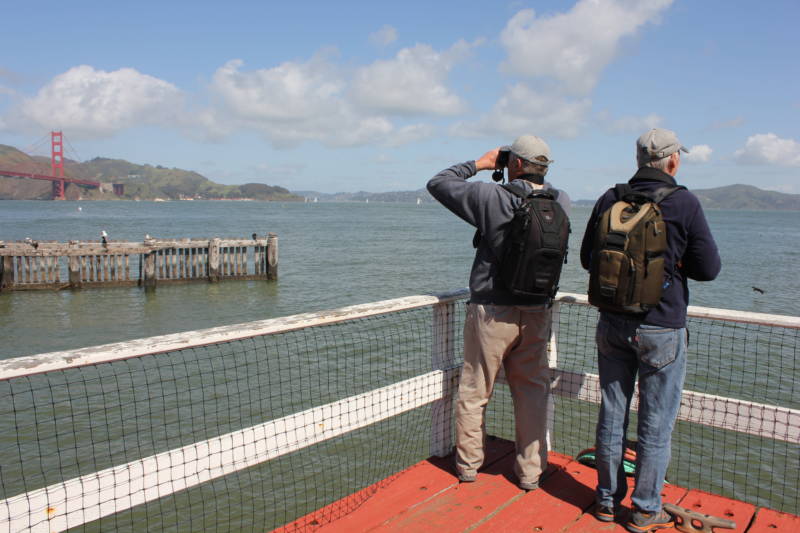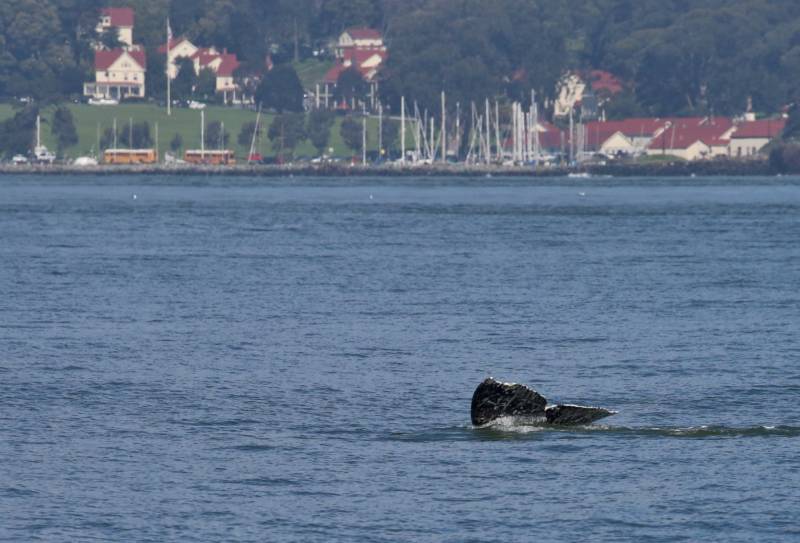An unusually large number of gray whales are hanging around San Francisco Bay this year. But while this influx has whale watchers and tourists excited, experts say it's not good news for the whales.
"Usually we see two or three gray whales stay a day or two," said Bill Keener with Golden Gate Cetacean Research, which has been tracking whales for decades.
But now? They're seeing two or three whales per day. And at least one has been staying in the bay for more than a month.
"I have never seen a gray whale from this location. I have seen humpback whales, especially a few summers ago," said Greater Farallones Association marine science instructor Courtney Buel, "but I had never seen a gray whale before."

Gray whales have one of the longest migration routes of any mammal. After wintering off the coast of Mexico, where they mate and give birth, whales swim more than 6,000 miles to spend their summers in Alaskan waters. But it's unusual to see them spend this much time in one place.

